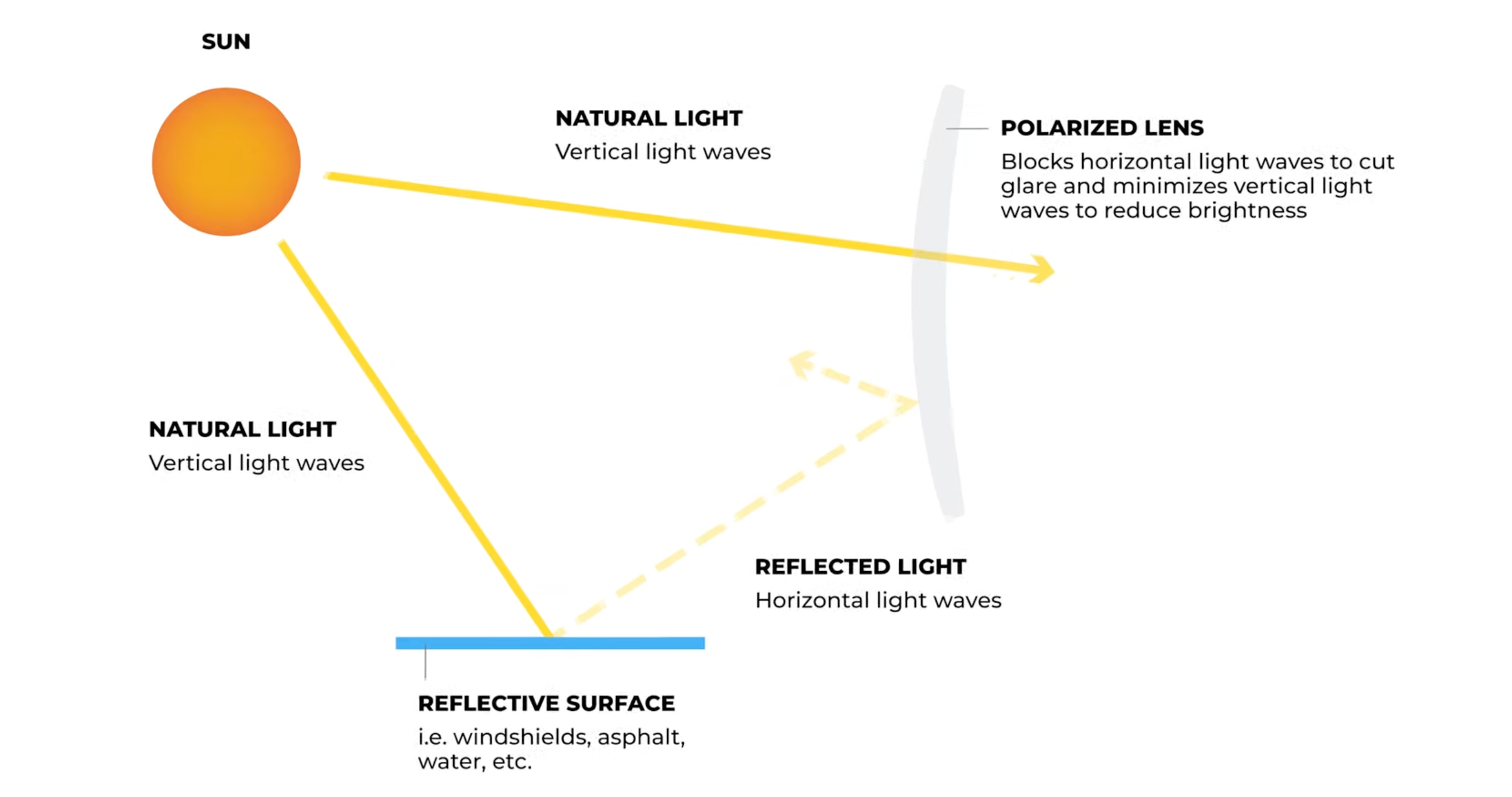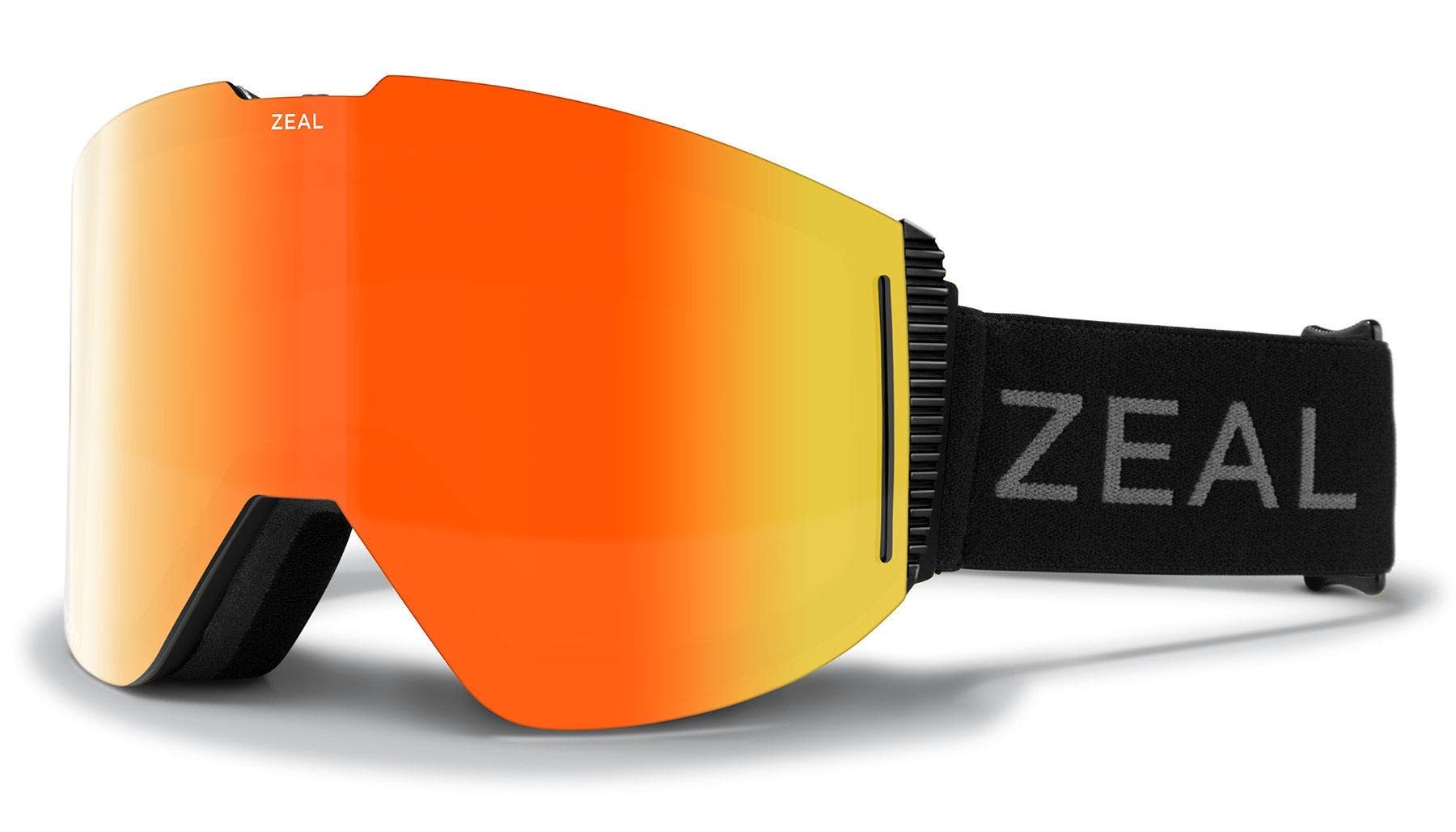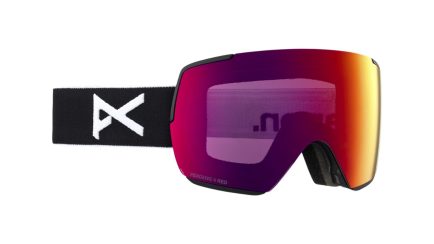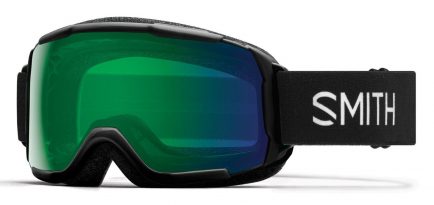While polarized lenses can be a huge asset to some sports, are they the best choice for your ski and snow goggles? Join SportRx as we reveal how polarized ski goggles work, and whether they're an asset — or liability — out on the slopes.
Table of Contents
A. Watch the Video
B. How Do Polarized Ski Goggles Work?
C. Polarized Vs Non-Polarized Ski Goggles
1. Cons
2. Pros
D. The Answer: To Polarize or Not?
E. Try Polarized Ski Goggles Risk-Free
Watch the Video
How Do Polarized Ski Goggles Work?
Before we can determine if you should get polarized ski goggles or not, it's important to understand how they work. Polarized ski goggles have a vertical chemical filter that blocks horizontal light, aka glare. Applied directly to the surface of the lens, this filter reduces harsh light that impacts our ability to see clearly. If done properly, polarized ski goggles can reveal greater clarity and contrast.

How Polarized Lenses Work
Polarized Vs Non-Polarized Ski Goggles
All of that sounds great, right?
In theory, and in some sports, polarization can be a huge asset. However, for skiers and snowboarders, polarized lenses can pose a risk. Let's look at the cons and pros of polarized snow goggles.
Cons
When skiing and snowboarding, glare plays a key role in distinguishing ice from snow. Without being able to spot icy patches, you may encounter risky areas you would have preferred to avoid.
Pros
When you're on the slopes and surrounded by highly-reflective snow, blinding glare is an unavoidable occurrence. Polarized snow goggles cut through this glare, so you have greater visual acuity. Here are the benefits of polarized lenses on the mountain:
- Reduced glare
- Greater contrast & detail
- More comfortable vision & less eye strain
The Answer: To Polarize or Not?
Maybe.
When considering if you should get polarized snow goggles or not, it all comes down to lens technology. Since not all polarized filters are created equal, our Sports Opticians generally advise staying away from traditional polarized lenses when on the slopes. Standard polarized filters will not allow you to distinguish ice from snow, which poses a safety risk when you're flying downhill.
There are, however, snow-specific polarized lens technologies that excel out on the mountain. For example, Zeal Optimum Polarized lenses are designed for skiing and snowboarding conditions. These lenses reduce glare while enhancing ice and hardpack, so you can make quick judgment calls during the descent.
Sports Opticians also love the fact that the Zeal Optics Optimum Polarized Collection has a 95% polarized efficiency. Typically, non-premium polarized ski goggles will use a lower percentage to achieve some glare reduction. Zeal Optimum Polarized lenses crank up the polarization to a wild 95% while still increasing definition, detail, and contrast of the terrain.
You can also use Zeal Automatic + Lenses which combine Polarization + Photochromic lens technologies. Automatically adapting to changing light conditions, you'll always get the perfect level of tint with the benefits of glare reduction.

Zeal Lookout in Dark Night with Polarized Phoenix Lens
Shop Zeal Optics Lookout
Try Polarized Ski Goggles Risk-Free
Unsure if you need polarized ski goggles? Ditch risky online shopping with our See Better Guarantee. Try your polarized goggles for 45 days. If you’re not 100% satisfied, send them back. Get a full refund, exchange, or credit towards a better pair. And return shipping? Covered. We even have prescription snow goggle inserts readily available to match your goggles for a seamless fit and superior optics. Get the best ski and snow goggles online at SportRx today!





Snow is not a flat surface. The ice crystals are oriented in many different directions, thus the light reflected off of snow becomes polarized in many different directions. Thus polarized sunglasses do not really help on snow. Unless you're skiing on a wet sheet of ice. I myself will just go to the bar in those conditions.